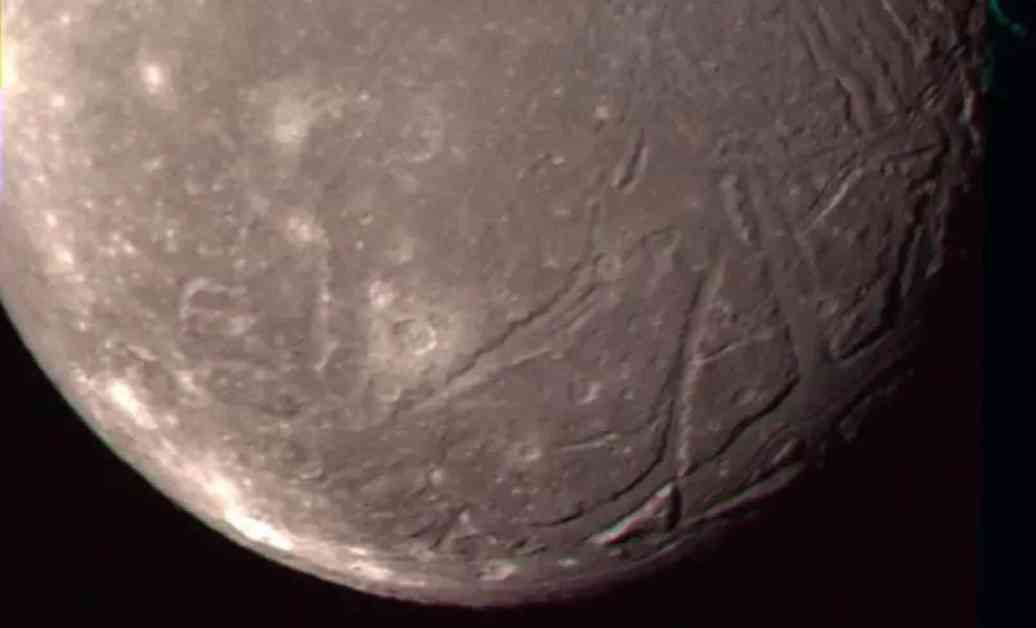Recent observations from NASA’s James Webb Space Telescope (JWST) have unveiled intriguing evidence suggesting that Ariel, one of Uranus’ moons, might be hiding a subsurface ocean. The discovery was made after JWST detected significant amounts of carbon dioxide ice on Ariel’s surface, particularly on its trailing hemisphere. This finding has led scientists to consider the possibility of a hidden ocean beneath Ariel’s icy crust.
The presence of such high levels of carbon dioxide ice on Ariel was unexpected, as compounds like carbon dioxide and carbon monoxide would typically turn into gas and dissipate into space due to the moon’s distance from the Sun. Initially, researchers thought that radiolysis, a process where molecules break down due to interactions with Uranus’ magnetosphere, could explain the presence of carbon dioxide. However, a new study published in the Astrophysical Journal Letters suggests that the carbon dioxide might be coming from a subsurface ocean, supported by the detection of carbonate minerals on the surface.
The discovery that Ariel may have one of the most carbon dioxide-rich surfaces in the solar system adds to the growing evidence that moons around gas giants could be hiding subsurface oceans, expanding the search for potentially habitable environments in our solar system. The James Webb Space Telescope’s infrared observation capabilities played a crucial role in analyzing Ariel’s surface composition, providing data to detect key indicators of potential subsurface oceanic activity.
This finding aligns with previous discoveries of subsurface oceans on other moons in our solar system, such as Europa and Enceladus, known for their geologically active surfaces and cryovolcanic processes. The JWST’s observations have reignited interest in the Uranian system, emphasizing the need for future missions to explore these distant moons further.
The next step would be a dedicated mission to Uranus and its moons, similar to planned missions to Europa and Titan, to directly investigate the subsurface conditions and confirm the presence of liquid water. The possibility of a subsurface ocean on Ariel has significant implications for our understanding of the moon’s geophysical processes and its potential to support life.
Subsurface oceans provide a stable environment shielded from harsh surface conditions, potentially maintaining the right chemical conditions for life to exist. A future mission to the Uranian system could involve landers or orbiters equipped with ice-penetrating radar and other instruments to explore the composition and extent of Ariel’s potential ocean, aiming to confirm its presence and investigate the broader question of habitability in the outer solar system.
This discovery on Ariel, made possible by the advanced capabilities of the James Webb Space Telescope, underscores the importance of ongoing exploration and study of the outer planets and their moons. These distant worlds may hold the key to understanding the prevalence of life in the vast universe, sparking curiosity and driving future missions to uncover the secrets of our cosmic neighborhood.












